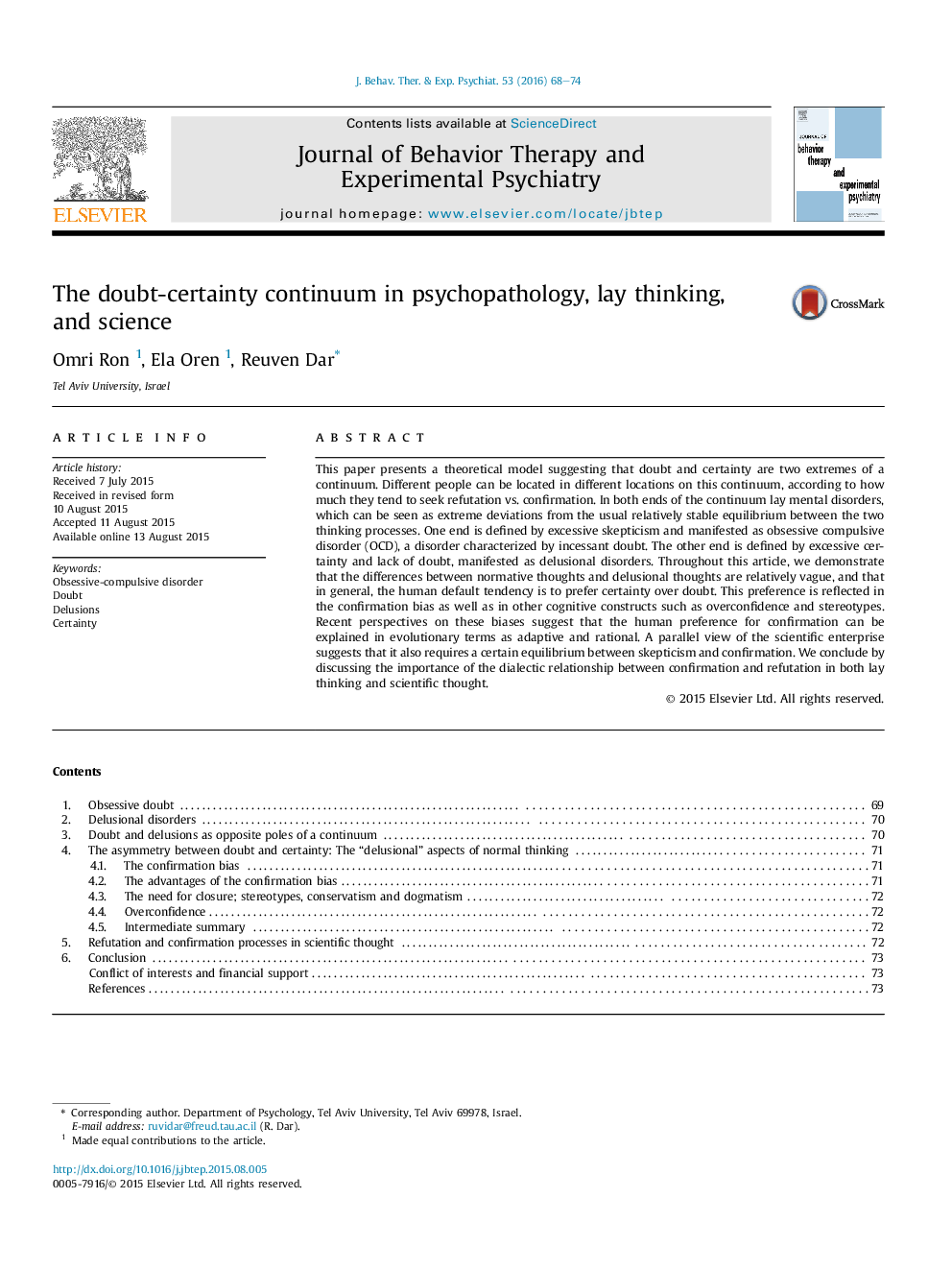| Article ID | Journal | Published Year | Pages | File Type |
|---|---|---|---|---|
| 5039042 | Journal of Behavior Therapy and Experimental Psychiatry | 2016 | 7 Pages |
â¢We examine the dialectics of doubt vs. certainty, confirmation vs. refutation.â¢Obsessions and delusions represent extremes of doubt vs. certainty.â¢Lay thinking and science are biased toward confirmation rather than refutation.â¢Some level of confirmation bias is essential for moving forward.
This paper presents a theoretical model suggesting that doubt and certainty are two extremes of a continuum. Different people can be located in different locations on this continuum, according to how much they tend to seek refutation vs. confirmation. In both ends of the continuum lay mental disorders, which can be seen as extreme deviations from the usual relatively stable equilibrium between the two thinking processes. One end is defined by excessive skepticism and manifested as obsessive compulsive disorder (OCD), a disorder characterized by incessant doubt. The other end is defined by excessive certainty and lack of doubt, manifested as delusional disorders. Throughout this article, we demonstrate that the differences between normative thoughts and delusional thoughts are relatively vague, and that in general, the human default tendency is to prefer certainty over doubt. This preference is reflected in the confirmation bias as well as in other cognitive constructs such as overconfidence and stereotypes. Recent perspectives on these biases suggest that the human preference for confirmation can be explained in evolutionary terms as adaptive and rational. A parallel view of the scientific enterprise suggests that it also requires a certain equilibrium between skepticism and confirmation. We conclude by discussing the importance of the dialectic relationship between confirmation and refutation in both lay thinking and scientific thought.
